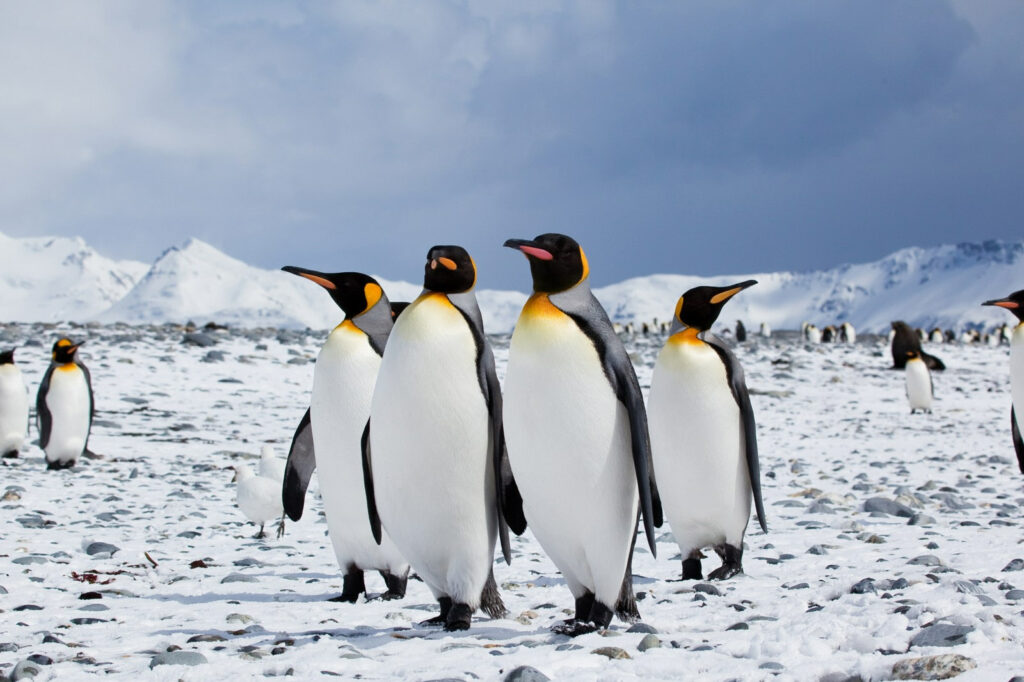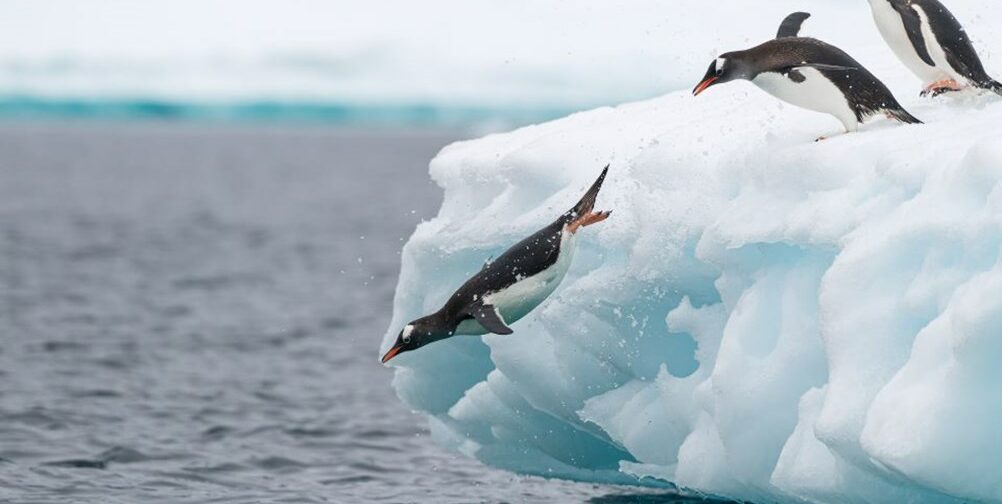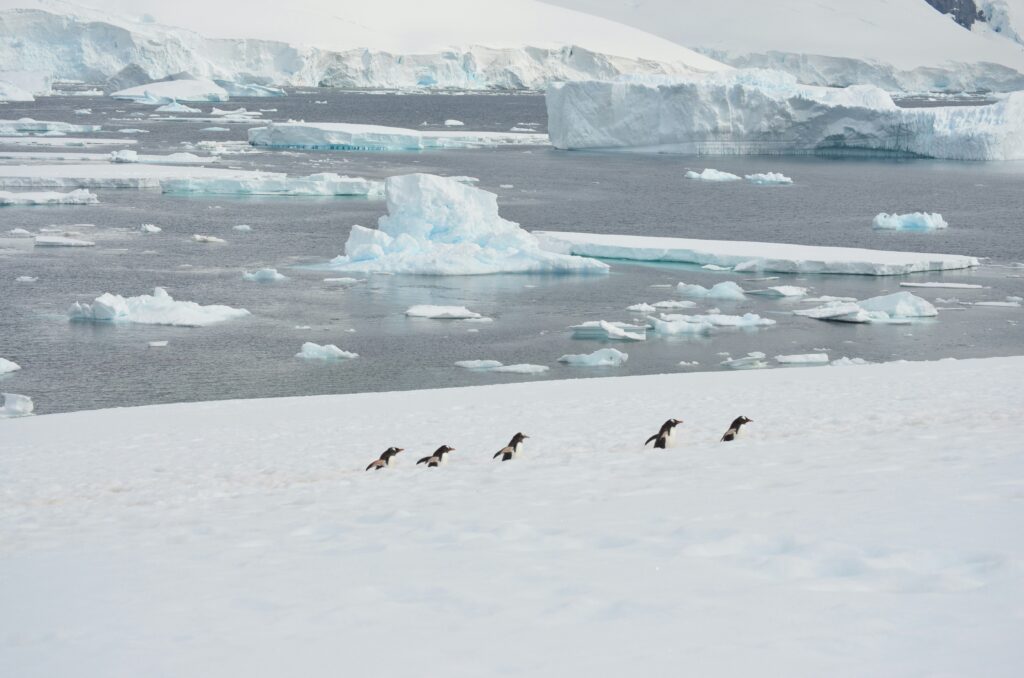According to [news source] an [iconic thing] in [an iconic place] is going to get it because of climate change. Fill in the blanks and reprint as needed. This time it’s the Financial Times, the chinstrap penguin and the Antarctic Peninsula. But it could be anything. Even a snail. The only wrinkle is that the inevitable unraveling of the story in the form of qualifications and caveats cannot be stated until near the final paragraph.
In this case the unraveling takes the form of pointing out that chinstrap penguins “are very extreme” even by penguin standards. Hence “Not a lot is known about chinstraps, compared with some other penguin species — partly because they live in these godforsaken places.” Far enough away from humans that it’s mostly guesswork what they do or how they are getting along.
The article goes on to warn that “Antarctica contains 70 per cent of the world’s fresh water, and 90 per cent of its ice. If the whole continent melted completely, global sea level would rise by 60m.” Yeah. If. Mais revenons à nos manchots.
Given the chinstrap’s penchant for living in bleak, uninhabited places, some populations have not been counted in decades. And some are in decline. One professor allows that “The alarming part for me is not just that they are declining but that we don’t understand what is going on — and who knows what else is going on, what else is declining, under our noses, that we are unaware of.”
Naturally having no clue doesn’t need to stop anyone from drawing the inevitable conclusion. “Climate change is the most likely factor behind the declines,” the article says. And because everything is warming faster than average, “The Antarctic Peninsula, where we are, is the fastest-warming part of the continent. It has heated up by about 3C since 1950, and, in February, a record high of 18.3C was recorded at Esperanza Base. The pace of change on the peninsula — which is warming more than three times faster than the rest of the planet — means the animal populations there are in the middle of a rapid transformation. Some species are thriving, while others are at risk of extinction.”
As someone observed on Twitter, this idea that everything is warming at twice the average pace would not actually defy the laws of mathematics on one key condition: the average pace must be zero. But no. It’s blistering, at least if you treat that suspicious Esperanza temperature outlier as typical. And there’s another trope here.
Whatever species is wobbling on the brink of rhetorical extinction is a key indicator. So yes, “The chinstrap is a barometer for broader shifts in the ecosystem.” And, the Financial Times article quotes one researcher, “The chinstraps are the canary in the coal mine for a whole host of changes that are happening on the Antarctic Peninsula.” Now awkwardly, the Antarctic Ocean is astoundingly fertile and some species are indeed thriving because warmth is good for life whereas the “snowball Earth” of 650 mya (if it happened; the science is of all things unsettled on that point) may really have pushed life to the brink, as another glaciation and CO2 below 180 ppm could also do going forward.
Bottom line? The usual. Climate change has wrecked everything. “You see the ecosystem out of balance,” says another researcher. And yet another “believes Antarctica may be producing less bottom water than before.” May be. And if so the ocean currents, which interestingly focus on Antarctica despite its being the edge of nowhere on conventional maps, might all be going to go kerflooey so we’re all going to die. (Also, more credibly, microplastic pollution is being carried to Antarctica in large amounts.)
Another scientist the author spoke to warns that the “Antarctic spiny plunderfish, Harpagifer antarcticus” might not like warm water. And so, given the IPCC’s supposedly predicted 4C to 6C temperature increase on the Antarctic Peninsula, the fish might move and another spiny plunderfish move in from Chile. It’s the end.
The article also says “One example of global warming is already clear as we trudge through the guano. There’s a sprinkling of rain, and the penguin chicks are looking wet and miserable. Their downy coats are highly adapted to snow but less effective in rain.” One swallow does not make a spring, nor one rainfall a mass extinction.
Thus if you persevere far enough in the article you discover that nobody seems to know how the krill is doing. And as for the birds, “Each of the five species of penguin in Antarctica faces a different destiny as the continent warms” because the “hardy gentoo” is thriving, the Emperor will be extinct by 2100 unless it isn’t because sea ice will vanish unless it persists, the most plentiful Adélie penguin is increasing in the “relatively cool East Antarctica” (the “relatively” being a cute way of avoiding admitting that Antarctica is incredibly cold and not warming lately) while diminishing in the Peninsula and the author forgot about the fifth (which can’t have been easy since it’s called the “macaroni penguin” and there’s actually a sixth also with a cool name, though some sources say it’s the “rockhopper” while others claim the rockhopper is not Antarctic but the splendidly-yclept “king penguin” is).
The article also says soon satellites will track penguins and people won’t have to get seasick, frozen and step in guano. And they will track whales, which though hard to count seem to be rebounding from overhunting, which is bad news for the krill they eat in stupendous quantities which might, horror of horrors, leave less for the penguins and put pressure on their population independent of warming.
The article deserves commendation for mentioning another awkward point too. It says “It won’t be the first time the continent has heated up — in past geologic epochs, it was warm enough to have trees and plants. But the planet was vastly different then, with much higher sea levels and hotter average temperatures” and three million years ago it had no ice. It rallies with “While Antarctica has seen warm temperatures before, humans have not. [Director of the Chilean Antarctic Institute, Marcello] Leppe pulls up a chart showing concentrations of carbon dioxide in the atmosphere, which rose above 400 parts per million in 2015. The last time that happened was three million years ago.”
Hang on. Three million years ago, atmospheric CO2 was where it is now but Antarctica was a savannah or forest or some such? Wouldn’t the obvious conclusion be that CO2 is not a big driver of global temperature? Oh no. Never that.
By the way, if you’re wondering about that snail, it’s the common or waved whelk. Buccinum undatum, and it lives in (drum roll please) “one of the Earth’s fastest-warming marine areas”, namely the mid-Atlantic, and its fate is indicative of what will soon happen to everyone. They will be called the next victim of climate change until attention wanders somewhere else.



If the Antarctic ice melted it would raise sea levels by 6 metres? Nonsense. I don't believe there is enough water there to raise sea levels even six inches.
Sorry, my last post should read 60 metres not 6.
Pinder: Well, we know that homo sapiens was able to cross the ocean to get to Australia 50,000 years ago because sea levels were much, much lower in the middle of the last glacial period.
Replying to my own post. I have done a very rough calculation. According to a previous post on this site ('How to Lie with Pictures') the amount of ice in Antarctica, though not precisely known is about 30 million cubic kilometres. The total surface area of the Earth is about 505.4 million square kilometres (4XPiX(radius of the Earth)^2), so dividing 30 million cubic kilometres by the surface area of the earth should give the depth to which the whole Earth would be flooded if the surface was all a smooth sphere of solid matter, or the sea level rise if the Earth was all sea & no land. The figure comes to about 59 metres. Of course the Earth is not all sea, I do not know off hand what the land area is, but this will make the sea area less than the 505.4 million square km area of the entire earth so the sea level rise would be greater than 59 metres. Two questions occur to me:
1) Does Antarctica really contain that much ice? Seems rather large to me.
2) How much of this water will evaporate?
sea ice does not cause sea level rise, as evidenced by filling a glass with half ice,half water and waiting for the melt. so the only numbers that bare any consideration should be land formed ice
The peninsula is warming more than three times faster than the rest of the planet? Well duh! So is Cuba, if you assume the planet is currently warming. That's because they are both located on land, land warms and cools much much faster than water, and the rest of the planet is mostly water.